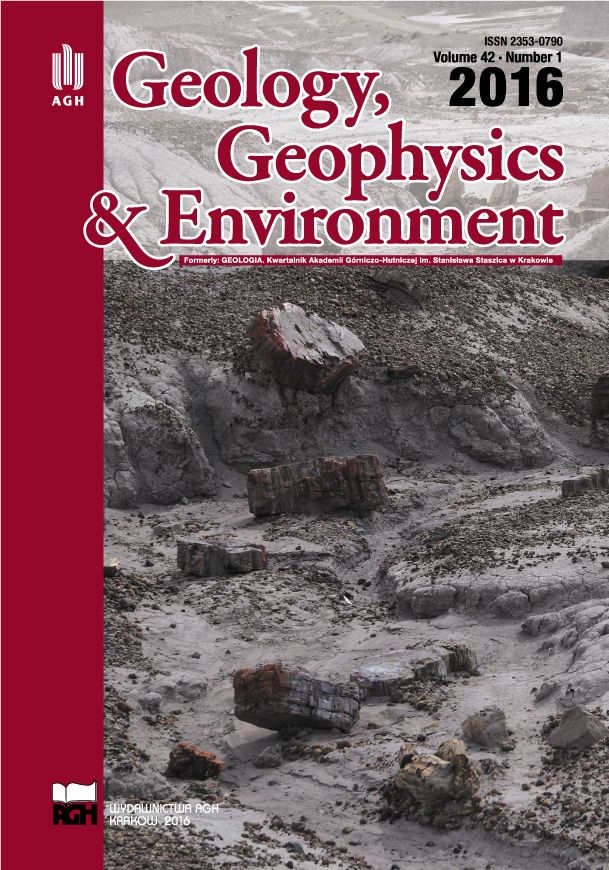Triangles in the Walls of the Great Pyramid in Giza
DOI:
https://doi.org/10.7494/geol.2016.42.1.141Keywords:
Ancient Egypt, Great Pyramid, Triangles, mineralogic-petrographic analyses, limestone from pyramidsAbstract
The Great Pyramid in Giza is the most researched and most recognisable object from the ancient world. Observations of its walls showed difference in colour of some limestone blocks used for building its core. Different colour of blocks results from the amount of fossil shells contained in the limestone. The large number of fossils not only give the limestone its colour but are also responsible for its hardness. Blocks made of this type of limestone constitute a triangle in the walls of the pyramid. Precision of masonry and their fitting is better than that of blocks made of other kind of limestone. The triangles in the pyramid wall were made from a special type of limestone.
The plateau consists mainly of middle Eocene nummulite limestone which belongs to the Mokkatam formation. The limestone is partly overlain by late Eocene limestone of the Maadzi formation. (Lehner 2004). The main purpose of this paper is to determine the mineral-petrographic composition of the blocks which were used to build the pyramid. Due to the insufficient amount of the veneer blocks, the study focuses on the stones which were used to build the core of the pyramid. (Folk & Campbell 1992).
It was discovered that better preserved blocks compose the central parts of the pyramid walls. The best preserved blocks are observed in the first layer. They lay in the distance of 40 m. from the corners of the pyramid and they were put in the central part of the pyramid’s foundation. In each subsequent layer their number is decreasing from the both sides. And thus, occurrence of this type of limestone ends up with the single block in the 19th layer, in the central part of the wall. These blocks are lighter and precisely fitted. They arrange in a characteristic way and create a structure of a triangle shape. The same elements are visible in the next three walls of the Great Pyramid at Giza.
Discovery of triangles in four walls of the Great Pyramid is its one more puzzle. The triangles have gone unnoticed through the ages. After reading the article each person will be able to see them without a problem, even on old photographs. (Zalewski 2004, 2006)
Concluding, the triangles with the base in the foundation of the Great Pyramid at Giza and their sides in its walls are visible in the four walls of the pyramid. From mentioned triangles the most visible is the triangle located in the western wall, topped with a single stone. It is in the 19th layer of the stones, 16 m 65 cm high. According to the calculations the angle of all mentioned triangles in its top amounts 155° The length of its base is about 150 meters.Downloads
References
Folk R L, Campbell D H. 1992. Are the Piramids of Egypt Built of Poured Concrete Blocks? Journal of Geological Education, v. 40, p 25-34.
Lehner M. 2004. The Complete Pyramids, The American University in Kairo Press.
Zalewski F. 2004. Trójkąty-nowe spostrzeżenie w piramidzie Cheopsa. Archeologia Żywa. p 5.
Zalewski F. 2006. Petrographic characteristics of resources used for building the Great Pyramid of Giza, Egypt. Geologo-mineralogiczeskij westnik. Nr 2. p 12 – 13.
Downloads
Published
Issue
Section
License
Authors have full copyright and property rights to their work. Their copyrights to store the work, duplicate it in printing (as well as in the form of a digital CD recording), to make it available in the digital form, on the Internet and putting into circulation multiplied copies of the work worldwide are unlimited.
The content of the journal is freely available according to the Creative Commons License Attribution 4.0 International (CC BY 4.0)










